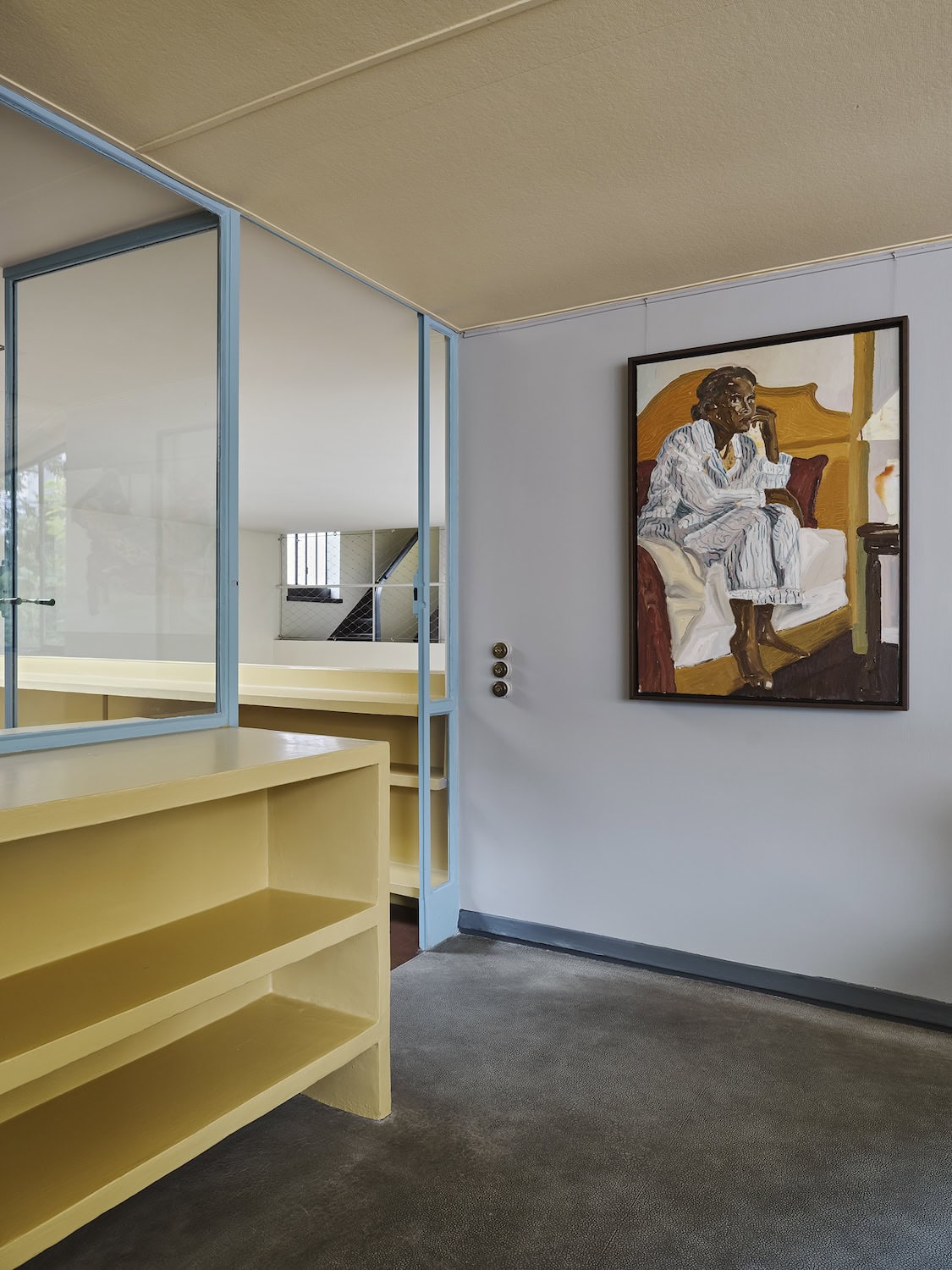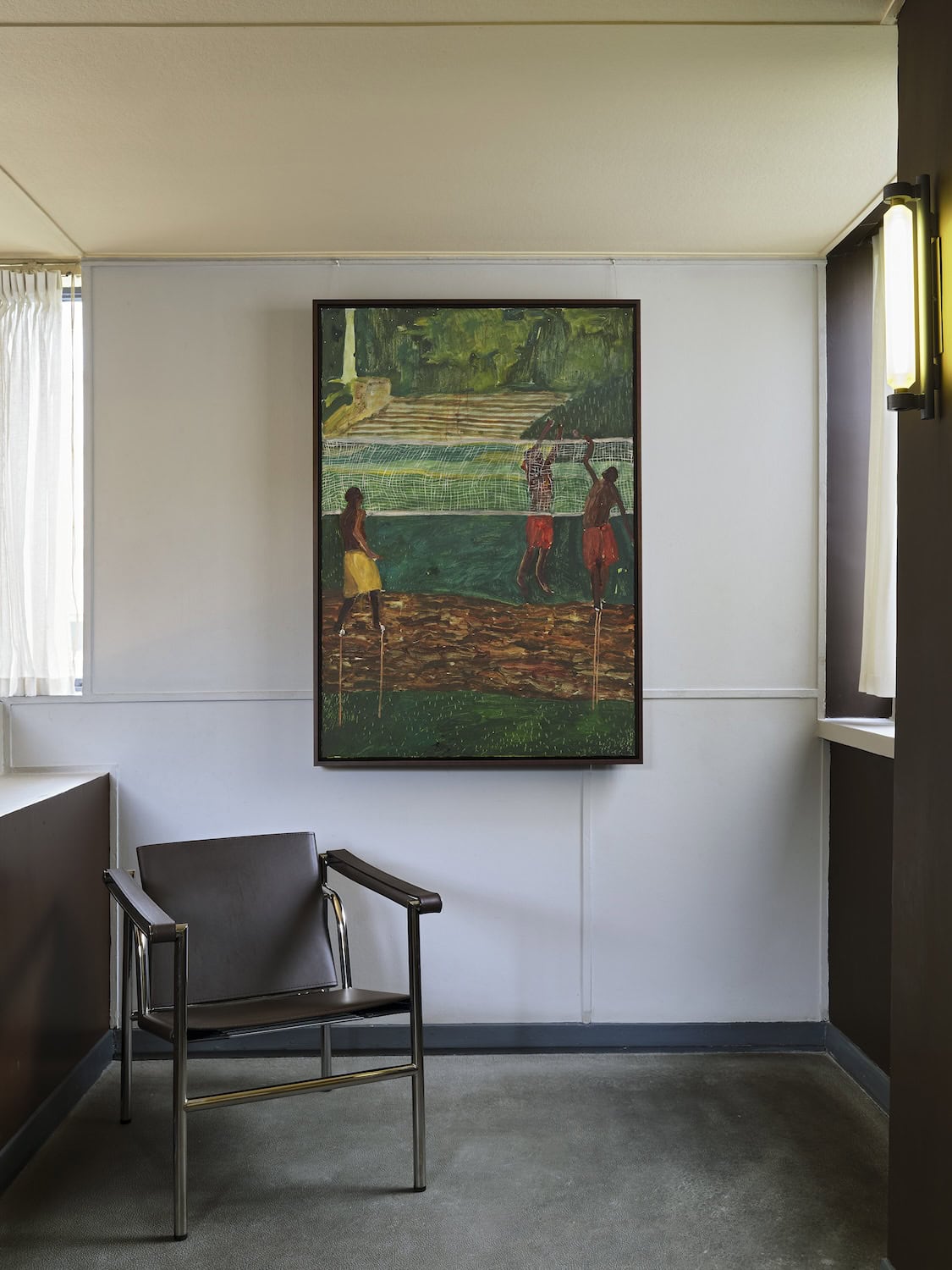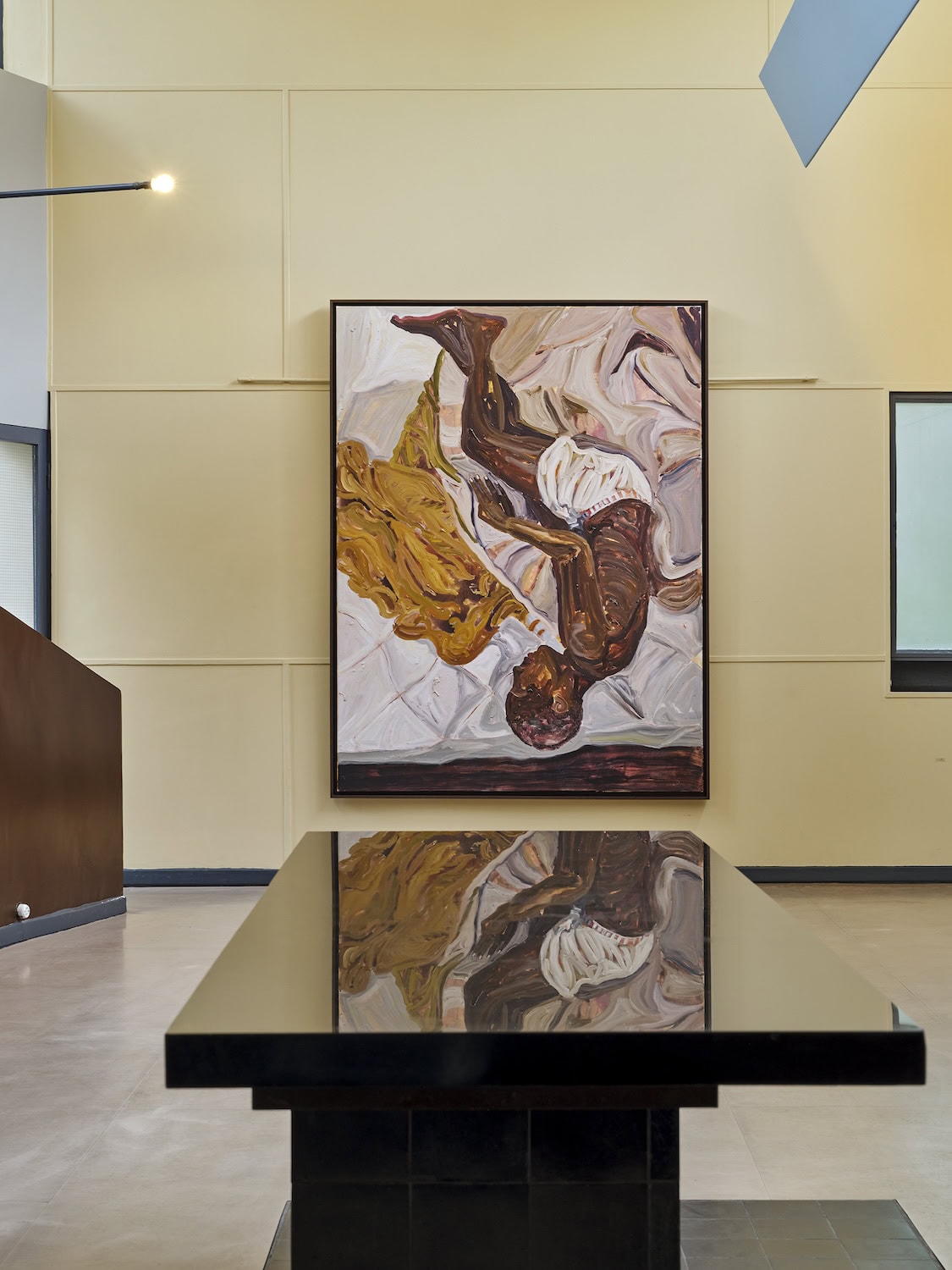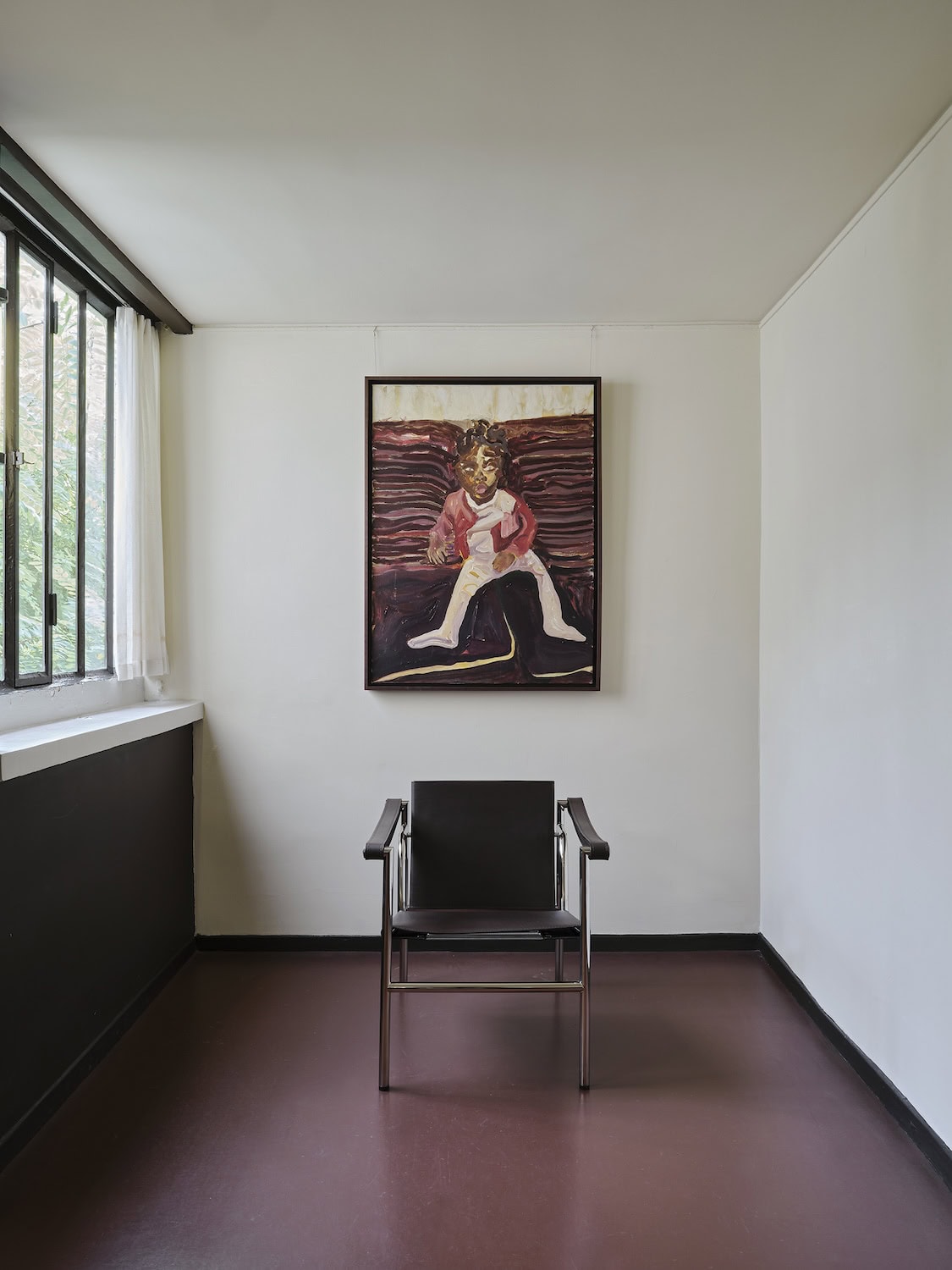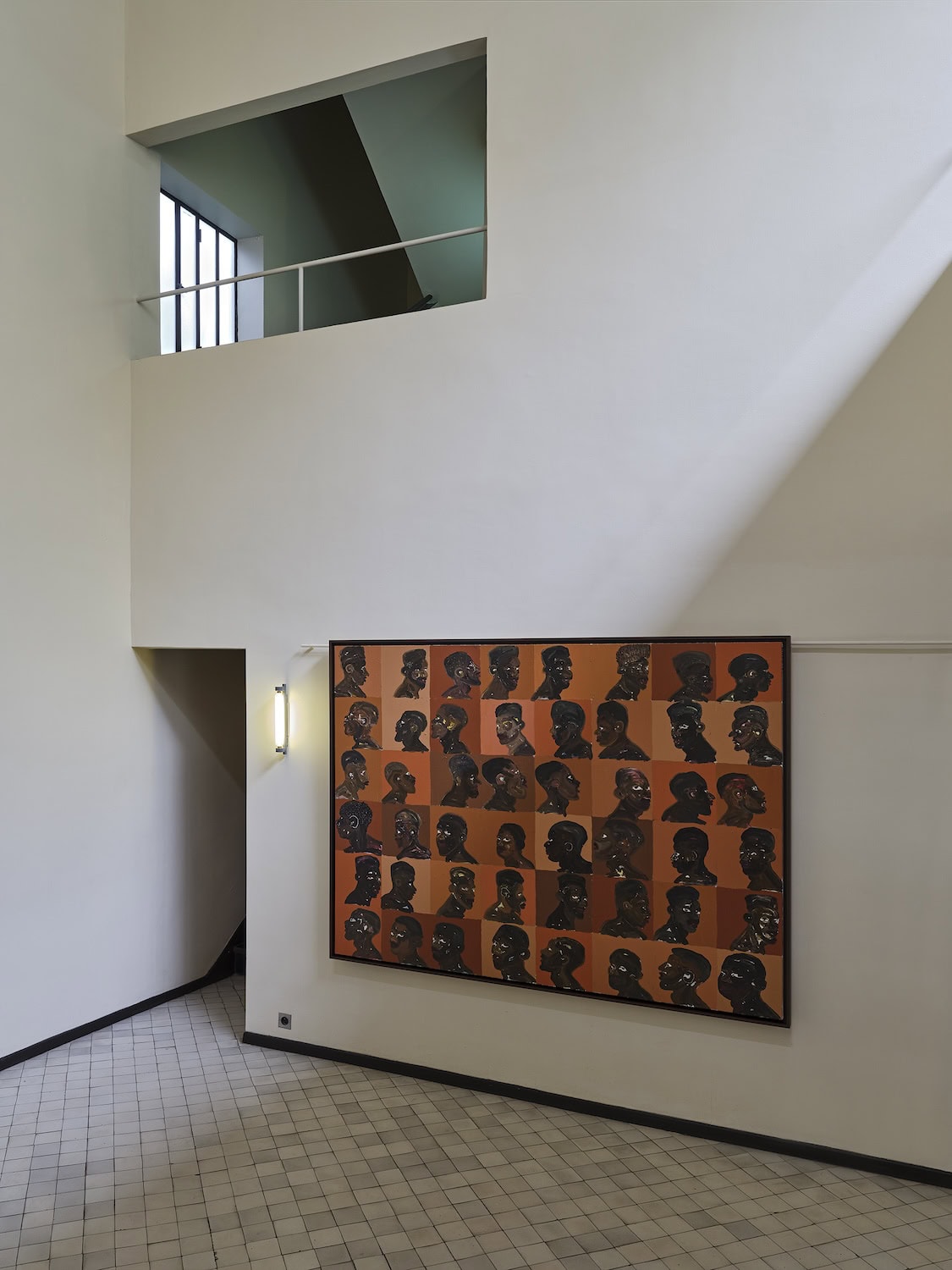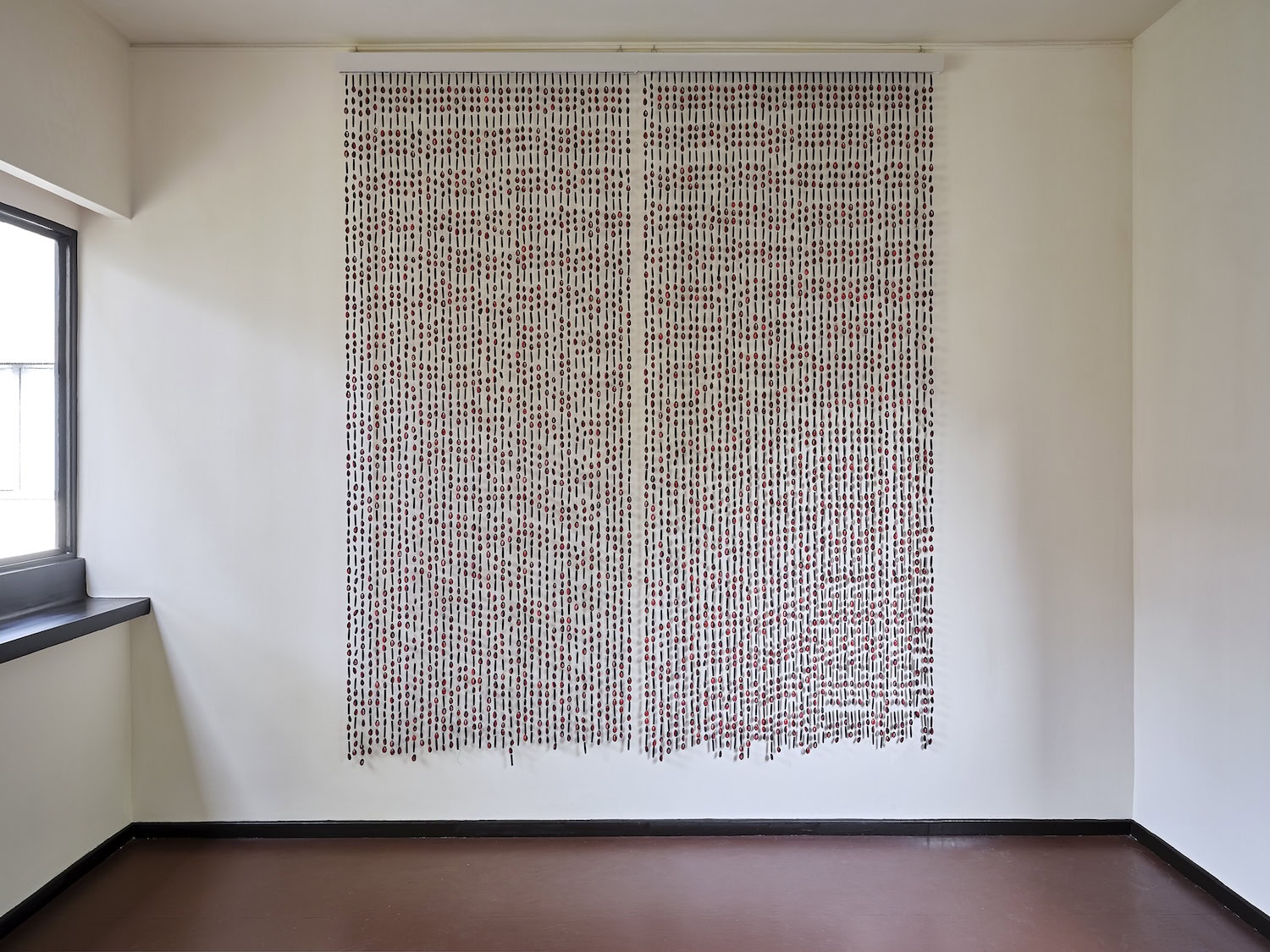Ludovic Nkoth’s figurative painting is a thick narration of visually laid-out diasporic life. Originally from Cameroon and based in New York, he’s been named to Forbes’s 30 Under 30 North America list. In October 2023, Nkoth presented a series of new works at Le Corbusier’s Maison La Roche, becoming the second living artist in the villa’s history to exhibit there. Presented within this iconic modern home built between 1923 and 1925 by Le Corbusier, What If is an invitation to rediscover this home, and to delve into an impossible dialogue between artist and architect, and the deep ties between their respective approaches to creation. Holding a dual point of perspective, Nkoth’s work is imbued with questions of identity and the ambiguous feelings associated with belonging. Nkoth’s work presents an insightful documentation of a
very personalized view of the complexity of two opposing social and political systems as well as his own family history and traditions. The works presented at Maison La Roche illustrate an evolution in NKoth’s practice, who undertook a residency in Paris to create these works, visiting the Maison’s archives and immersing himself in the aesthetic canons of Le Corbusier.
Ilaria Sponda: What’s your background? How has your career as an artist have developed?
Ludovic Nkoth: I was born and raised in Cameroon until the age of 13. I migrated to the United States, Spartanburg South Carolina to be more specific. From there I moved to NYC to pursue my master’s degree and fell in love with the city, as you might agree, it’s a very easy city to fall in love with. I believe my career has been a direct response to the displacement I’ve experienced. My career is sort of like a developing journal.
IS: What’s the idea behind your exhibit at Maison La Roche, Fondation Le Corbusier?
LN: A central question to this body of work is: What if a family of color had lived at Maison La Roche? The paintings rearrange the La Roche “household” physically and visually in order to showcase alternative narratives of home life. Painting for me grounds this tension, and allows a new narrative to be created from it. A narrative about a sense of belonging and alienation. However, the subjects are not members of Raoul La Roche’s family, rather, they belong to no one and everyone all at once. They are often a product of my voyeuristic encounters with the everyday lives of strangers like children, women, and men, they are all transposed into this otherworldly context. With this in mind, I’ve let my curiosity run free in order to envision the life of an imaginary family residing in La Villa La Roche. The central question, What if, ultimately inserts itself in the realm of re-imagination, inviting the visitor to navigate alternative interiorities and to consider the What if of it all.
IS: How have you been thinking of the relation between your works and the space at Maison La Roche?
LN: For this new body of work I wanted to be in direct conversation with the physical space but also be mindful of remembering Le Corbusier as not only an architect but also an artist. The way the building is designed is meant to challenge conventional spatial awareness and moving around the space, therefore my work had to be situated in a way that honored his architectural pedagogy. I’d like to think that my work not only responds to Maison La Roche but is also in an active conversation with it.
IS: What questions led you to the creation of paintings? And specifically, what’s the spark that initiated this series exhibited at Maison La Roche?
LN: I’ve had a thirst for curiosity ever since I was a child. I remember always taking items apart to figure out how they function and then later failing to put them back together. Life has always felt like a puzzle. I would say this is how I approach painting, too. They’re so many things in our world I don’t fully understand, painting helps me slow down the clock and have a closer look at the unknowable things in life, such as human emotions. Curiosity and the pursuit of attempting to understand the world continue to be a driving force in my work. After all, the show is titled What If, to highlight the question what if this space was associated with different histories? How does that transform the space? Is meaning-making in the eye of the beholder?
IS: Representation is still key to painting practice nowadays. What’s still relevant in representing particular subjects nowadays? And what’s still relevant in placing them in physical spaces for an audience to engage with?
LN: Representation within painting is like a language or a way of understanding and deciphering the world and its symbols. I believe that magical thinking can occur when a viewer is in front of a painting whose subject feels both foreign and familiar at the same time. Representational paintings almost exist as mirrors. We see ourselves in them but they can also play tricks on us. Placing these paintings in unique spaces such as Maison LA Roche, invites the audience to perhaps create new associations or at least create a breathing room for inquiry.
Born in Cameroon, Ludovic Nkoth (b.1994) moved to the United States at the age of 13, he now lives and works in New York. Nkoth’s artistic creations capture the essence of the Black experience with an unparalleled emotional depth that resonates with the diasporic life and the rich history of his heritage. Each of his thickly impastoed portraits is a gateway into a world of colour and texture. As a Cameroon-born artist who has made his home in the United States, he brings a unique perspective to his work, infusing it with his own personal experiences of being a Black immigrant in a foreign land. His practice is a seamless fusion of art and introspection, with each piece serving as a reflection of his ruminations on family history, tradition, and the ongoing legacy of colonialism that continues to impact Black lives today.
